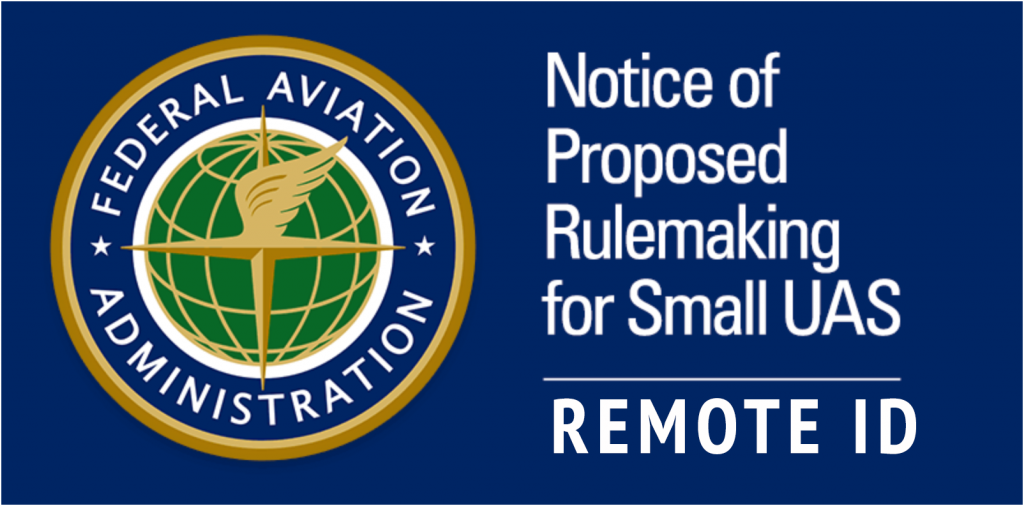FAA issues notice of proposed rulemaking for remote identification of drones
Possibly attempting to hide its Remote ID NPRM, the Federal Aviation Administration (FAA) issued a notice of proposed rule making (NPRM) for its previously announced Remote ID for drones. The NPRM document that can be found here is currently unpublished, but is scheduled to be officially published on NYE, leaving the first 60 days of 2020 open for comment. Maybe it is the FAA’s way of saying Happy Holidays? Or is it their way of welcoming us to drone regulations for the next decade?
Notice of proposed rule making for Remote Identification (Remote ID) of drones
Thee FAA clearly sees Remote ID for small unmanned aerial systems (sUAS) as a way to safely integrate drones into the National Airspace System (NAS). The agency states that nearly 160,000 remote pilots have registered nearly 1.5 million drones to date.
“Drones are the fastest-growing segment of the entire transportation sector” – Press Release
The FAA does encourage all drone pilots, or anybody with an interest in aviation safety, to read the NPRM, even before its published date (not likely with everyone out for the holidays). Once the document is officially published on December 31, 2019, a 60-day comment period begins, allowing drone operators (and there) to express their concerns and provide feedback to assist the FAA come to a final rule on Remote ID for drones.
“As a pilot, my eye is always on safety first. Safety is a joint responsibility between government, pilots, the drone community, the general public, and many others who make our nation so creative and innovative.” – Steve Dickson, FAA Administrator
Remote ID represents the latest step taken by the FAA and UAS industry to safely integrate sUAS (drones) into the National Airspace System (NAS). Its intent, at least originally, was to allow commercial drone operators to perform complicated operations such as flight beyond-line-of-sight (BVLOS) and assist the FAA, law enforcement and Federal security agencies in enforcing compliance when drones are operated in an unsafe manner, or where they should be flying. Remote ID builds on framework established via the small UAS rule (pdf) and Low Altitude Authorization and Notification Capability (LAANC) to lay a foundation for an Unmanned Aircraft System Traffic Management System (UTM).
“Remote ID technologies will enhance safety and security by allowing the FAA, law enforcement, and Federal security agencies to identify drones flying in their jurisdiction,” – Elaine L. Chao, US Transportation Secretary
Remote ID would apply to all drones required to be registered with the FAA, meaning sUAS that weight between .55 pounds and 55 pounds. Drones weighing less than .55 pounds, such as the DJI Mavic Mini, are not required to be registered, which may increase the value of this little drone. Was DJI aware of what was coming all along? Will other manufacturers bail on larger drones and only build “baby” drones?
The NPRM goes into two main types of Remote Identification of Drones, Standard and Limited (which basically caps the altitude at 400 feet above the control station). Under the proposal, the vast majority of UAS would be required to comply with one of these two categories of Remote ID, which would mean the possible demise of the industry, though here at Drone Mastery™, we doubt that. The compliance date is yet announced and likely will be a while into the future, as is typical in other areas of aviation (such as the ADS-B implementation for all manned aircraft by 2020). There will be exceptions for amateur-built UAS and UAS manufactured prior to the compliance date, which will be allowed to continue operations without Remote ID, but only in certain specific geographic areas (think “Podunk”, US).
Drone Mastery’s Initial Viewpoint
We have not had a chance to thorough read the entire NPRM (it is rather lengthy), thus cannot provide a specific “Yes” or “No” on if we think it is good or bad overall. We do agree that the FAA, law enforcement, and other agencies need to have a method of enforcing safe and legal operations. Atfer all, Drone Mastery™ was founded to assist in accomplishing just that, but we still see illegal and unsafe operations, and YouTube videos showing them, every day. The NPRM is a big deal for the industry and raises many questions, not the least of which is privacy concerns. As the next 60 days play out, we will post our viewpoints, and the viewpoints of others. In the meantime, we highly encourage you to read the NPRM and formulate your own opinions (do not rely only on what you hear from others) and even leave your opinions in the comments below.




No Comments